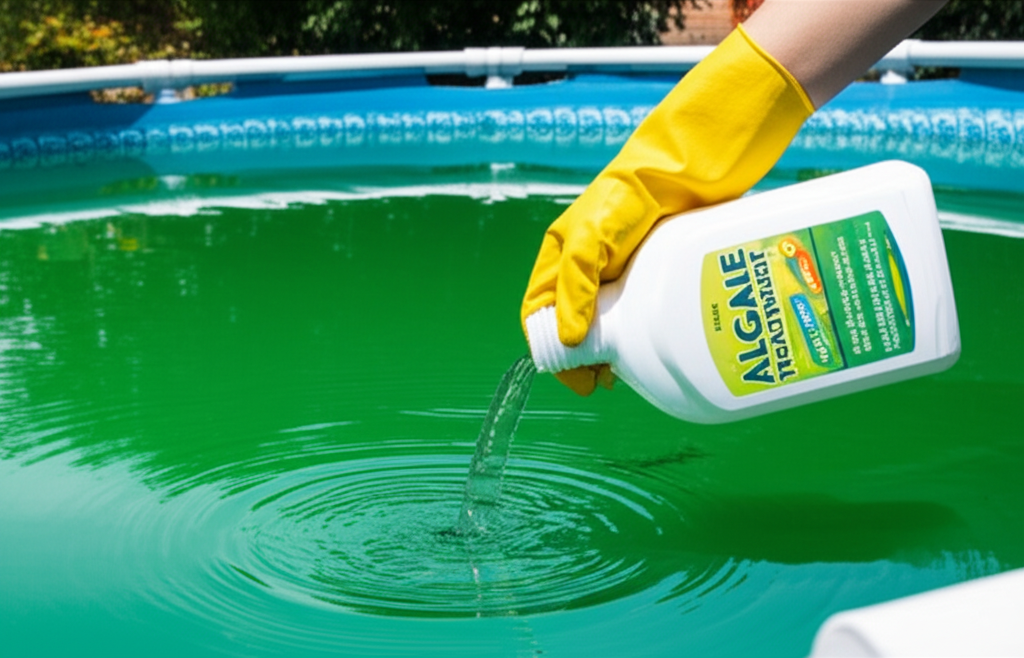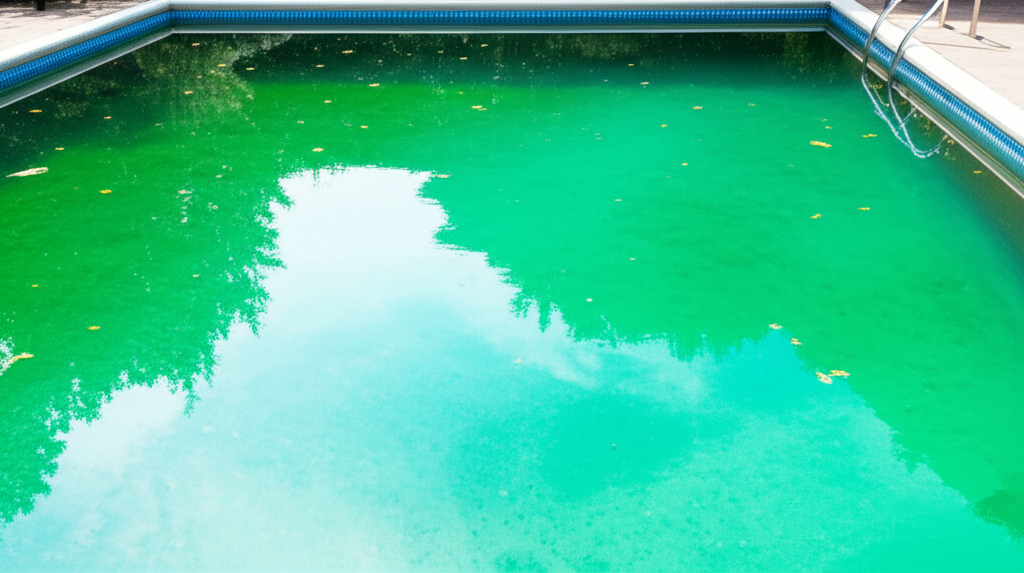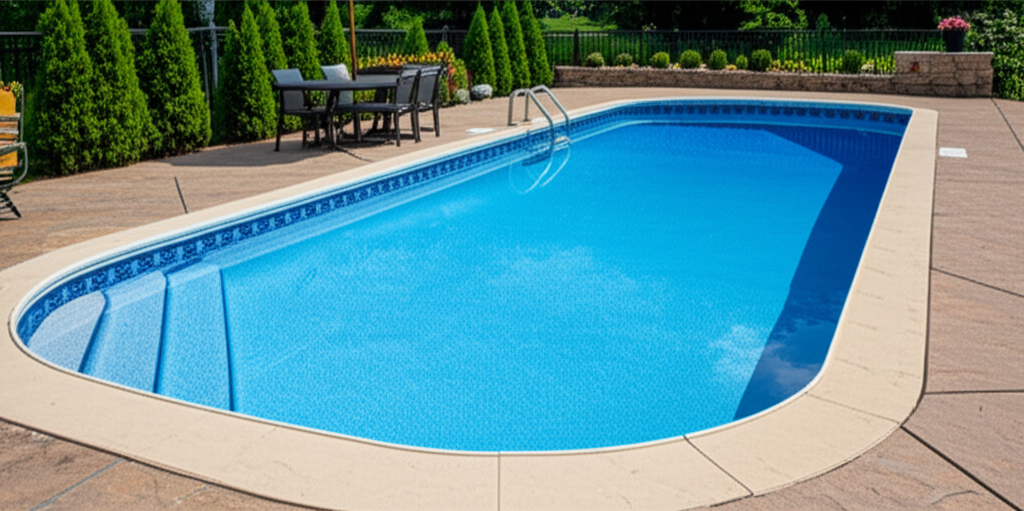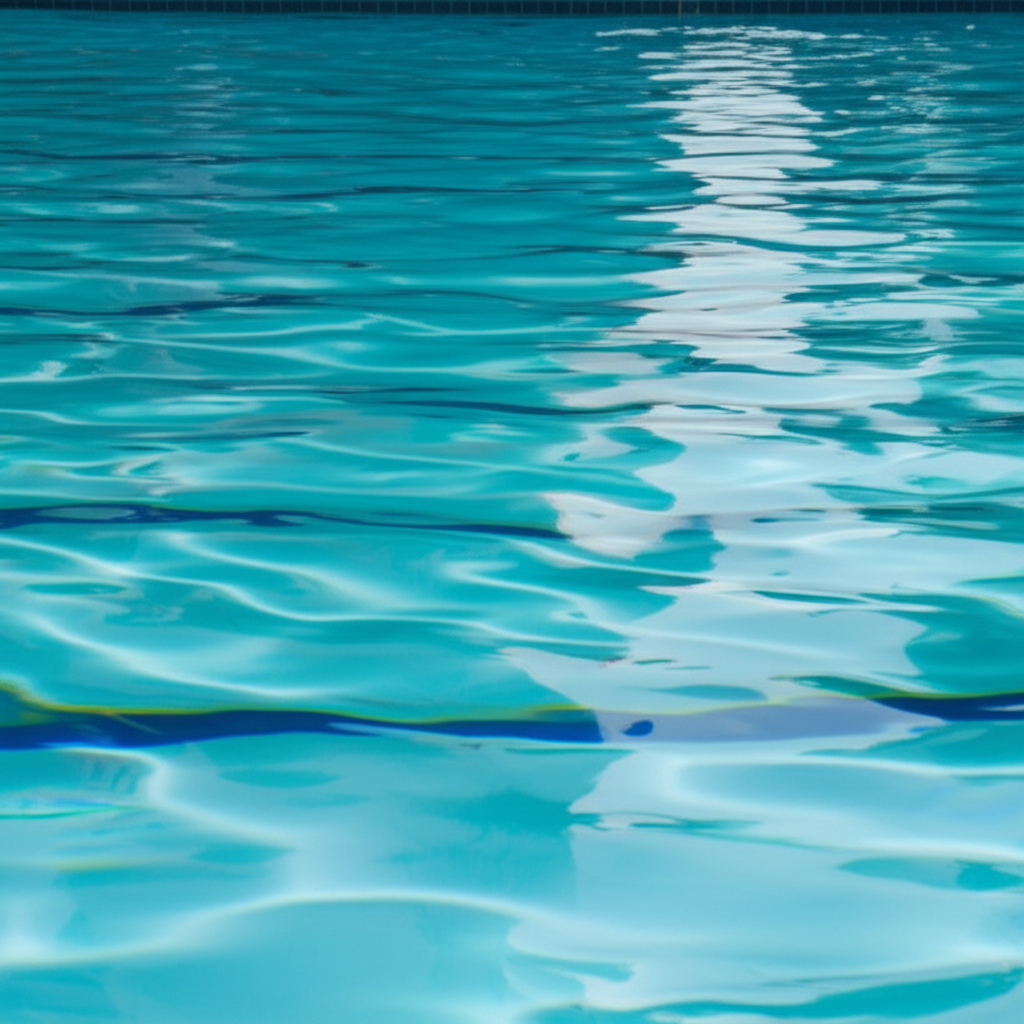- Understanding the Enemy: Why Your Pool Turned Green
- The Green Pool Rescue Plan: Step-by-Step Algae Treatment
- Step 1: Assess and Prepare
- Step 2: Brush, Brush, Brush!
- Step 3: Shock Treatment – The Heavy Artillery
- Step 4: Run Your Filter Continuously
- Step 5: Add Algaecide (If Necessary)
- Step 6: Clarify and Clean Up
- Step 7: Final Water Balancing
- Maintaining a Crystal-Clear Pool: Preventing Future Green Pool Problems
- When to Call a Professional
Green pool is a homeowner’s nightmare, transforming a refreshing oasis into a slimy, uninviting spectacle. This common issue arises when algae, microscopic plant-like organisms, begin to proliferate in your pool water, often due to an imbalance in water chemistry, insufficient sanitation, and poor filtration. While the sight of a green pool can be disheartening, rest assured that with the right approach and a little elbow grease, a successful algae treatment is entirely achievable. This guide will walk you through the most effective tips to rescue your pool from the clutches of algae and restore its sparkling clarity.
Understanding the Enemy: Why Your Pool Turned Green
Before diving into treatments, it’s crucial to understand why your pool turned green in the first place. Algae thrives in conditions where:
Low Chlorine/Sanitizer Levels: Inadequate chlorine is the primary culprit. Without enough sanitizer, algae spores can rapidly multiply.
Poor Filtration: A dirty or malfunctioning filter can’t effectively remove algae spores and other organic matter.
Imbalanced Water Chemistry: High pH, alkalinity, or cyanuric acid (CYA) levels can diminish chlorine’s effectiveness.
Warm Temperatures: Heat accelerates algae growth.
Lack of Circulation: Stagnant water provides an ideal breeding ground.
High Phosphates: Phosphates act as a food source for algae, encouraging rapid growth.
Recognizing these factors helps not only with current algae treatment but also in preventing future outbreaks.
The Green Pool Rescue Plan: Step-by-Step Algae Treatment
Rescuing a green pool requires a systematic approach. Follow these steps for the most effective algae treatment:
Step 1: Assess and Prepare
First, gather your tools and assess the severity. You’ll need a pool brush, skimmer net, telescoping pole, water testing kit, pool shock (calcium hypochlorite or dichlor), algaecide, a filter cleaner, and potentially a clarifier.
Test Your Water: Use a reliable test kit or strips to get accurate readings for pH, alkalinity, chlorine (free and total), and CYA. This information is vital for proper chemical adjustments.
Remove Debris: Skim out any leaves, bugs, or large debris from the pool surface and bottom. This prevents organic material from consuming shock and hindering the treatment.
Step 2: Brush, Brush, Brush!
This step is often overlooked but incredibly important. Algae clings to the walls and floor of your pool. Using a sturdy pool brush, vigorously scrub all surfaces – walls, steps, and floor. This dislodges the algae, allowing the chemicals to penetrate more effectively and the filter to capture more material. Pay special attention to corners and shaded areas where algae tends to accumulate.
Step 3: Shock Treatment – The Heavy Artillery
Superchlorination, or “shocking,” is the most critical step in killing algae. You’ll need to add a high dose of chlorine to overwhelm the algae.
Calculate Shock Dose: The amount of shock needed depends on the severity of the greenness and your pool volume.
Light Green: 1-2 lbs of shock per 10,000 gallons.
Medium Green/Cloudy: 3-4 lbs of shock per 10,000 gallons.
Dark Green/Black: 5-6 lbs of shock per 10,000 gallons (or even more for very severe cases).
Apply Correctly: Always dissolve granular shock in a bucket of water before adding it to the pool to prevent bleaching your liner or causing damage. Pour the dissolved shock around the edges of the pool, preferably at dusk or night, as sunlight can degrade chlorine.
Circulate: Run your pool filter continuously for at least 24-48 hours after shocking.
Step 4: Run Your Filter Continuously
Your filter is your best friend during an algae treatment. It needs to work overtime to remove the dead algae particles.
Continuous Operation: Keep your filter running 24/7 until the water clears.
Monitor Pressure: Regularly check your filter pressure gauge. As the filter collects dead algae, the pressure will rise.
Backwash/Clean Frequently: If you have a sand or DE filter, backwash when pressure rises significantly. For cartridge filters, remove and thoroughly clean the cartridges. You may need to do this multiple times. Consider using a filter cleaner product to optimize performance.
Step 5: Add Algaecide (If Necessary)
While shock kills algae, algaecides can act as a booster, particularly for stubborn algae types, or as a preventative measure.
When to Use: If your pool is still cloudy or slightly green after shocking and filtering, an algaecide can help.
Types: Look for a quality algaecide that is compatible with your pool type and other chemicals. Quat algaecides are common for green algae. Follow product instructions carefully.
Step 6: Clarify and Clean Up
Once the algae is dead (the water should turn a cloudy gray or bluish color), it’s time to consolidate the particles and remove them.
Flocculants/Clarifiers: Pool clarifiers cause small particles to clump together, making them easier for the filter to catch. Flocculants are more aggressive, causing particles to sink to the bottom where they can be vacuumed away. Choose based on your preference and pool type.
Vacuum to Waste: If using a flocculant, or if you have a significant amount of dead algae on the bottom, vacuuming directly to waste (bypassing the filter) is crucial. This removes the debris from the pool entirely, preventing it from overwhelming your filter.
Step 7: Final Water Balancing
After the water is clear, re-test all your water parameters. Adjust pH, alkalinity, and maintain proper free chlorine levels to ensure the pool is safe and ready for swimming.
Maintaining a Crystal-Clear Pool: Preventing Future Green Pool Problems
The best defense against a green pool is consistent maintenance.
Regular Testing & Balancing: Test your water at least weekly and adjust chemicals as needed.
Maintain Chlorine Levels: Keep free chlorine between 1-3 ppm.
Run Filter Daily: Aim for 8-12 hours of filtration daily, ensuring all pool water turns over multiple times.
Brush Regularly: Even a healthy pool benefits from weekly brushing to dislodge any potential algae spores.
Address Phosphates: Use a phosphate remover if you have high levels, especially if algae is a recurring issue.
* Clean Filter Consistently: Regular backwashing or cartridge cleaning is essential for efficient filtration.
When to Call a Professional
Most green pool issues can be resolved with diligent DIY algae treatment. However, if you’re dealing with severe black algae, a persistent green problem despite your best efforts, or simply lack the time and expertise, don’t hesitate to call a pool professional. They have access to stronger chemicals and specialized equipment that can tackle the toughest cases.
In conclusion, a green pool doesn’t have to ruin your summer. By understanding the causes, diligently following the step-by-step algae treatment plan, and committing to regular maintenance, you can swiftly restore your pool to its pristine condition and enjoy a sparkling, inviting swim all season long.




